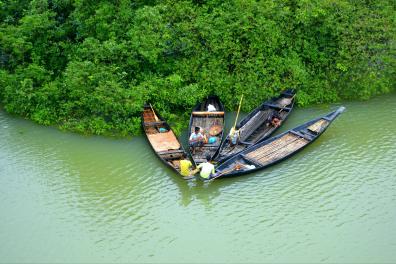Bengali
This page has been translated automatically.
Bengali, or "Bangla" to its speakers, is the national language of Bangladesh and one of the constitutionally recognized languages of India, where it is the official language of the states of West Bengal and Tripura. There are many Bengali emigrants around the world, mainly in England and North America. In total, 250 million people worldwide speak Bengali. Over the past fifteen years, France has seen a steady increase in the number of immigrants and refugees from Bangladesh.
Bengali, or "Bangla" to its speakers, is the national language of Bangladesh and one of the constitutionally recognized languages of India, where it is the official language of the states of West Bengal and Tripura. There are many Bengali emigrants around the world, mainly in England and North America. In total, 250 million people worldwide speak Bengali. Over the past fifteen years, France has seen a steady increase in the number of immigrants and refugees from Bangladesh.

Example courses
- Applied grammar of Bengali
- Phonology of Bengali
- Politics and institutions of contemporary India
- Bengali cinema
- Literary translation and contemporary Bengali literature
Professional opportunities
- Diplomacy: Bengali can be entered as a second or optional language in certain competitive examinations held by the Ministry of Foreign Affairs.
- Legal and social translation and interpreting: the number of Bengali speakers (generally with little knowledge of French) has been growing steadily for several years, made up of immigrants and statutory refugees; the often precarious situation of these immigrants requires translations of official civil status and other documents, asylum application documents, medical, school and legal documents that require qualified translators, of whom there have been very few in France up to now.
- Literary translation: Bengali literature enjoys great prestige and is extremely rich.
- Research in Bengali language and literature, anthropology and ethnology, and in history and political science (this field has proved particularly promising in recent years, with the growing development and interest in studies of the contemporary Islamic world and the relations between Islam and politics, with a geostrategic scope of the first order).
- Education
- Psychiatry and psychology: with the number of Bengali speakers steadily increasing for several years, made up of immigrants and statutory refugees, often in fragile situations, the needs in this field are pressing.
- Humanitarian work: Bangladesh's humanitarian needs are colossal; field work with NGOs and other humanitarian organizations requires knowledge of the local language
- Tourism: tourism is a developing sector in India and Bangladesh.
- Economy: trade and industrial exchanges between France and Bangladesh have been developing for some twenty years.